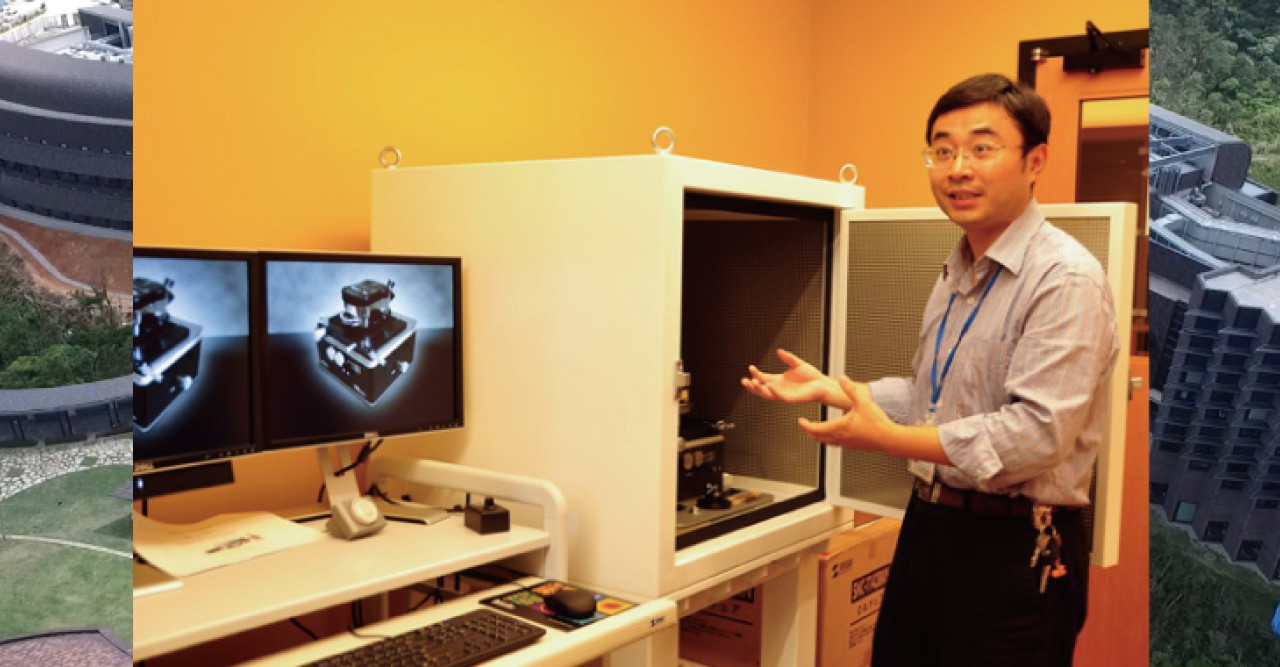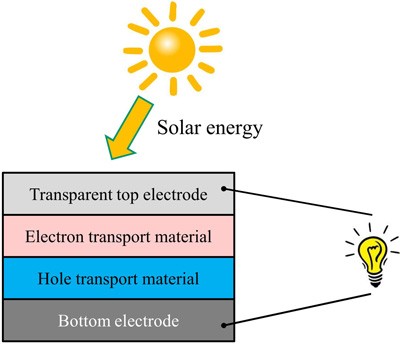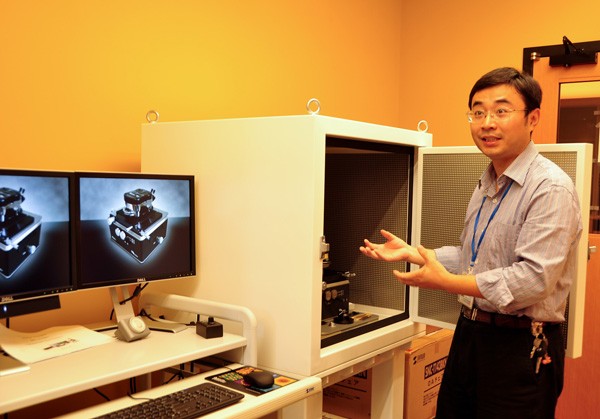A Smarter Way to Solar Power

The looming energy concerns caused by diminishing availability of fossil fuels demands that nations consider alternative energy sources such as solar power. Assistant Professor Dr. Yabing Qi, who leads the OIST Energy Materials and Surface Sciences unit, is enthusiastic about the potential to develop hybrid solar cells that cost less to produce and are highly efficient.

“One often hears of hybrid cars, hybrid plants, and hybrid animals but how often do we hear hybrid solar?” asks an enthusiastic Dr. Yabing Qi. Current solar panel cells are made of inorganic materials, polycrystalline silicon, that is expensive and time consuming to produce. Hybrid solar cells that Dr. Qi is investigating are made of a combination of both organic and inorganic materials.
Dr. Qi urges that “Going green is not just about using renewable energy but also about identifying smarter ways of tapping into natural resources. The advantage of making use of organic materials in solar cells is that the materials are easily accessible and one doesn’t need fancy equipment to produce solar cells, thus making production a lot cheaper. Combining the benefits of both inorganic and organic materials provides a promising way to make cheap and efficient solar cells.”
Solar panels usually consist of four components: the first is a transparent top electrode that allows sun rays into the solar panel, the second and third is the electron and hole transport material where excitons are generated by incident photons from sun rays. These excitons migrate to the interface between the electron and hole transport material where they are separated. Separated electrons/holes are transported in electron transport material/hole transport material, respectively. They are then collected by the two electrodes; the top and bottom electrode to provide electricity for external circuits such as light bulbs.
Dr. Qi’s research involves understanding the structure-property relationship in the solar cell component materials as well as exploring novel technologies - e.g., nanotechnology - in developing low-cost and high efficiency solar energy harvesting devices. Through collaborations with scientists from other universities, Dr. Qi hopes to expand his research network. His collaborations go from Osaka University and Hiroshima University in Japan to Peking University in China, Princeton University and University of California Berkeley in the USA, and Imperial College London in the UK.
His research could not have come at a more opportune time as Japan and the world considers moving to other energy sources. The world’s primary energy source is derived from non-renewable fossil fuels such as oil 35%, coal 28% and gas 23%. Renewable energy sources in particular solar contribute a mere 0.04% (International Energy Agency, 2006).
The government of Japan is currently providing households with incentives to install panels that tap solar energy and save unused energy to a central grid that can be shared among households. Efficient solar cells like those Dr. Qi is developing could see households run their own grids and become self-sufficient.

Dr. Yabing Qi explains the atomic force microscopy machine he uses in his lab.
Research Unit
For press enquiries:
Press Inquiry Form














